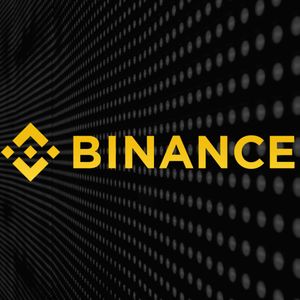Are your Bitcoin transactions feeling slower than ever? You’re not alone. Recent reports indicate a significant slowdown in the Bitcoin network, with average Bitcoin confirmation times reaching an unprecedented 19 minutes. This alarming development, reported by Cointelegraph on X, has sparked concern and curiosity within the crypto community. Let’s dive into what’s causing these Bitcoin transaction delays and what it means for you. Why Are Bitcoin Confirmation Times Skyrocketing? Several factors contribute to the current surge in Bitcoin confirmation times . It’s a perfect storm of network dynamics, highlighting both the strengths and limitations of the Bitcoin blockchain. Here’s a breakdown: Network Congestion: Think of the Bitcoin network as a digital highway. When more transactions are submitted than the network can handle efficiently, traffic jams occur. This network congestion is a primary driver of longer confirmation times. Increased user activity, perhaps due to market volatility or new adoption waves, can quickly clog the network. Block Size Limits: Bitcoin’s blockchain operates with a block size limit of roughly 1MB. This constraint, designed for security and decentralization, means that only a limited number of transactions can be included in each block mined approximately every 10 minutes. When transaction volume exceeds block capacity, a backlog forms, leading to delays. Fee Dynamics: In Bitcoin, users attach fees to their transactions to incentivize miners to prioritize them. Transactions with higher fees are generally processed faster. When network congestion is high, users often need to increase their fees to ensure timely confirmation. However, this creates a competitive fee market, potentially pricing out users with lower fee tolerance and further contributing to overall delays. Understanding Bitcoin Transaction Delays: A Closer Look To truly grasp the impact of these delays, let’s break down what Bitcoin confirmation times mean and why they matter: Aspect Description Impact of Increased Confirmation Times Confirmation Time The time it takes for a Bitcoin transaction to be included in a block and considered verified by the network. Longer wait times for transactions to finalize. Network Throughput The number of transactions the Bitcoin network can process per second. Reduced throughput means the network struggles to keep up with demand, leading to backlogs. User Experience The overall ease and speed of using Bitcoin for transactions. Frustration for users expecting quick and efficient transactions, especially in time-sensitive situations like point-of-sale purchases. Fee Market The competitive environment where users bid transaction fees to get their transactions processed faster. Higher fees become necessary for faster confirmations, increasing the cost of using Bitcoin, particularly during peak congestion. What Does This Mean for Crypto Users? The record-high Bitcoin confirmation times present both challenges and opportunities for crypto users: Challenges: Slower Transactions: The most immediate impact is the increased wait time for transactions to be confirmed. This can be inconvenient for everyday use cases, especially when speed is crucial. Higher Fees: To expedite transactions during congestion, users may need to pay higher fees, making Bitcoin potentially less cost-effective for smaller transactions. Uncertainty: Longer confirmation times can introduce uncertainty, particularly in volatile markets where timely execution of trades is important. Opportunities & Actionable Insights: Layer-2 Solutions: This situation highlights the importance of Layer-2 solutions like the Lightning Network, which offer faster and cheaper Bitcoin transactions. Exploring and adopting these solutions can mitigate the impact of mainnet congestion. Fee Awareness: Understanding Bitcoin fee dynamics becomes crucial. Using fee estimators and adjusting fees based on network conditions can help optimize transaction speed and cost. Patience and Planning: For less time-sensitive transactions, patience is key. Planning transactions ahead and avoiding peak congestion times can help reduce delays. Consider Alternatives (Strategically): In situations where extremely fast and low-cost transactions are paramount, users might temporarily consider other cryptocurrencies with faster confirmation times and lower fees, while still holding Bitcoin for its store of value properties. Are There Solutions to Bitcoin Network Congestion? Addressing network congestion and improving crypto transaction speed on Bitcoin is an ongoing discussion within the community. Potential solutions and improvements include: Block Size Increase (Controversial): Increasing the block size limit could theoretically allow more transactions per block. However, this is a contentious topic with potential implications for decentralization and node operation. Segregated Witness (SegWit): Already implemented, SegWit optimized block space and increased transaction capacity to some extent. Further adoption and optimization can still contribute. Taproot Upgrade: This recent upgrade enhances Bitcoin’s scalability and privacy, potentially contributing to more efficient transaction processing in the long run. Layer-2 Scaling Solutions (Lightning Network): Continued development and adoption of the Lightning Network and other Layer-2 solutions are crucial for offloading transaction volume from the main Bitcoin blockchain and enabling faster, cheaper transactions. Conclusion: Navigating Bitcoin’s Evolving Landscape The surge in Bitcoin confirmation times to a record 19 minutes serves as a stark reminder of the challenges and trade-offs inherent in decentralized, permissionless blockchains. While these delays can be frustrating, they also underscore the importance of ongoing innovation and adaptation within the Bitcoin ecosystem. Understanding the causes behind these Bitcoin transaction delays , exploring Layer-2 solutions, and practicing fee awareness are crucial steps for users to navigate this evolving landscape effectively. As Bitcoin continues to mature, addressing scalability and improving crypto transaction speed will remain paramount for its widespread adoption and usability. To learn more about the latest crypto market trends, explore our article on key developments shaping Bitcoin price action.






